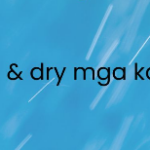
Transactions that are conducted electronically or digitally have become the new normal. In the Philippines, the epidemic has resulted in a growth in digital transactions, with businesses offering goods and services online and consumers paying for them via bank transfers, mobile wallets, and QR code scanning.
As a result, buying and selling transactions are rapidly migrating away from cash payments and toward QR code payment (also known as scan to pay), which is faster, easier, and more accurate. In fact, as of May 2021, the value of QR code transactions in the Philippines had surpassed PHP 1 billion.
Whether you’ve used QR codes before or not, it’s worth learning more about them and how they function in the Philippines.
What is QR Ph?
QR Ph is a national standard for payment transactions that uses quick response technology and code scanning. QR Ph allows Filipino company owners and customers to have cheaper, faster, and safer payment transactions.
The Bangko Sentral ng Pilipinas (BSP) debuted this QR code-based payment system in November 2019, initially for person-to-person transactions (P2P) such as payments and remittances. The ultimate purpose of QR Ph P2P is to enable “payment interoperability.”
After being released in October 2021, the QR Ph P2M (person-to-merchant) is now also active.
What is QR Ph P2P?
P2P (short for person-to-person) allows money to be transferred from one person to another. You must have an Electronic Money Issuer (EMI) using InstaPay to access the P2P function.
What exactly is QR Ph P2M?
Unbanked Filipinos can use QR Ph P2M (or QR Ph for person-to-merchant) to send digital payments to places like supermarkets, restaurants, department stores, drug stores, and even wet markets.
It expands the QR code payment capability to eliminate the need for cash, a point-of-sale system, or a credit or debit card for both customers and company owners.
How Does It Work?
Customers can make a payment by using their mobile phone to produce a QR code from their electronic account. Merchants, on the other hand, can supply a QR code that can be scanned by the customer’s smartphone.
What Are the Requirements for Making a QR Ph P2M Payment?
To make a QR code payment, you’ll need the same things you’ll need for QR Ph P2P:
- InstaPay-enabled electronic payment account (bank or e-wallet)
- A camera phone is a phone that has a camera.
- Connection to the internet or data
- Image of a QR Code
Which Companies Can Benefit from QR Ph P2M?
QR Ph P2M can be used by the following businesses:
- Supermarkets
- Department stores are a type of business that sells
- Stores that sell saris
- Restaurants
- Small business owners
QR Ph P2M is also available to customers who have accounts with the following banks:
- Asia United Bank is a financial institution based in Asia (AUB)
- China Banking Corporation is a financial institution based in China (Chinabank)
- USSC Money Services Inc. is a financial services company based in the United States (UMSI)
- LANDBANK
- Rural Bank of Cebuana Lhuillier, Inc.
- RCBC
- Starpay Corporation is a financial services company based in the United States (Starpay)
- AllBank (A Thrift Bank), Inc. is a thrift bank.
- UnionBank
Customers can pay merchants using the QR Ph P2M feature if they have an account with one of the following banks:
- Rural Bank Cebuana Lhuillier
- AllBank (A Thrift Bank), Inc. is a thrift bank
- RCBC
- AUB
- Metrobank
- Starpay
- UnionBank
- USSC Money Services Inc. is a financial services company based in the United States (UMSI)
- PayMaya
Consumers and Merchants’ Benefits and Drawbacks of QR Ph
By introducing the QR Ph P2P and P2M initiatives, the BSP has stepped up its promotion of digital payments in the Philippines. QR Ph basically connects QR codes around the country to make payment quicker and safer for Filipinos.
QR Ph has advantages and problems, just like every other technology breakthrough.
Pros of QR Ph
Here are some of the advantages of using a QR code in the Philippines, whether as a consumer or a merchant:
- Informal merchants (such as tricycle drivers and sari-sari store proprietors) are exempt from purchasing and operating point-of-sale equipment.
- QR code payments can be made using EMI accounts by unbanked sellers.
- Payments to merchants are completely free.
- It is more convenient to send and receive cashless payments.
- When paying or giving change, customers and merchants do not need to count coins or bills.
Cons of QR Ph
Of course, employing a QR code system like QR Ph has drawbacks. Here are a few of the more obvious ones:
- You’ll need a mid-range phone, a data internet connection, and an EMI account at the very least.
- If you’re unfamiliar with EMI accounts, cashing in and out may be difficult.
- You must also pay the costs levied by your EMIs for cash in and cash out.
- You’ll need to learn about additional security measures to protect your money and digital accounts because you’ll be using a digital means of payment.
Final Thoughts
Participating in the digital economy allows you to adjust to the new normal. At first, opening an account with a bank or a non-bank electronic money provider can seem intimidating or complicated.
However, if it means enjoying faster, easier, and safer financial transactions, it’s well worth investigating and adopting. In the Philippines, the usage of a QR code can surely make online payments and purchases more accessible to everyone.




